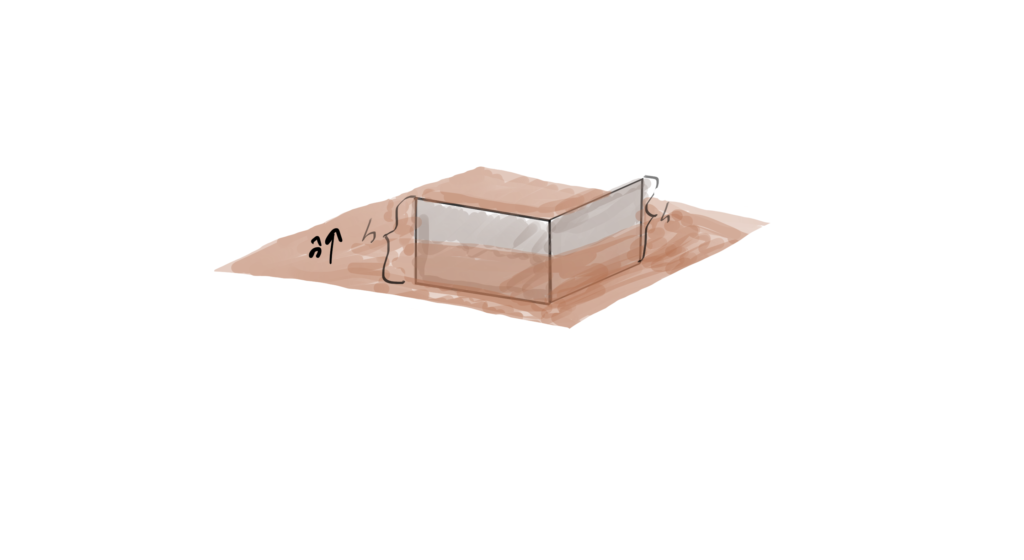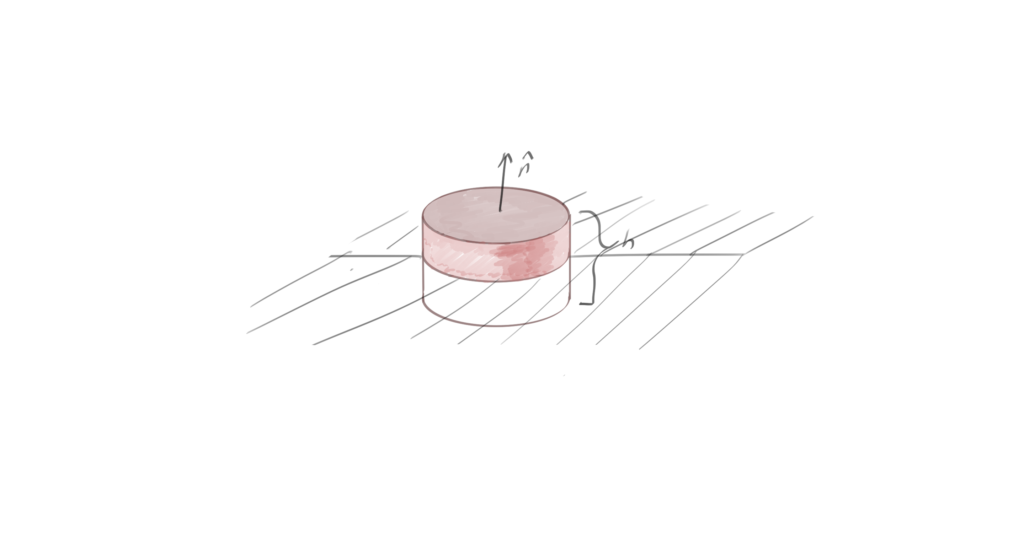This is the 4th part in a series on finding Maxwell’s equations (including the fictitious magnetic sources that are useful in engineering) from a Lagrangian representation.
[Click here for a PDF version of this series of posts, up to and including this one.] The first and second, and third parts are also available here on this blog.
Now, let’s suppose that we have a pseudoscalar Lagrangian density of the following form
\begin{equation}\label{eqn:fsquared:840}
\begin{aligned}
\LL &= F \wedge F + b I A \cdot M \\
&= \inv{4} I \epsilon^{\mu\nu\alpha\beta} F_{\mu\nu} F_{\alpha\beta} + b I A_\mu M^\mu.
\end{aligned}
\end{equation}
Let’s fix \( b \) by evaluating this with the Euler-Lagrange equations
\begin{equation}\label{eqn:fsquared:880}
\begin{aligned}
b I M^\alpha
&=
\partial_\alpha \lr{
\inv{2} I \epsilon^{\mu\nu\sigma\pi} F_{\mu\nu} \PD{(\partial_\beta A_\alpha)}{F_{\sigma\pi}}
} \\
&=
\inv{2} I \epsilon^{\mu\nu\sigma\pi}
\partial_\alpha \lr{
F_{\mu\nu} \PD{(\partial_\beta A_\alpha)}{}\lr{\partial_\sigma A_\pi – \partial_\pi A_\sigma}
} \\
&=
\inv{2} I
\partial_\alpha \lr{
\epsilon^{\mu\nu\beta\alpha}
F_{\mu\nu}
–
\epsilon^{\mu\nu\alpha\beta}
F_{\mu\nu}
} \\
&=
I
\partial_\alpha
\epsilon^{\mu\nu\beta\alpha}
F_{\mu\nu}
\end{aligned}
\end{equation}
Remember that we want \( \partial_\nu \lr{ \inv{2} \epsilon^{\mu\nu\alpha\beta} F_{\alpha\beta} } = M^\mu \), so after swapping indexes we see that \( b = 2 \).
We would find the same thing if we vary the Lagrangian directly with respect to variations \( \delta A_\mu \). However, let’s try that variation with respect to a four-vector field variable \( \delta A \) instead. Our multivector Lagrangian is
\begin{equation}\label{eqn:fsquared:900}
\begin{aligned}
\LL
&= F \wedge F + 2 I M \cdot A \\
&=
\lr{ \gamma^\mu \wedge \partial_\mu A } \wedge \lr{ \gamma^\nu \wedge \partial_\nu A } + 2 (I M) \wedge A.
\end{aligned}
\end{equation}
We’ve used a duality transformation on the current term that will come in handy shortly. The Lagrangian variation is
\begin{equation}\label{eqn:fsquared:920}
\begin{aligned}
\delta \LL
&=
2 \lr{ \gamma^\mu \wedge \partial_\mu A } \wedge \lr{ \gamma^\nu \wedge \delta \partial_\nu A } + 2 (I M) \wedge \delta A \\
&=
2 \partial_\nu \lr{ \lr{ \gamma^\mu \wedge \partial_\mu A } \wedge \lr{ \gamma^\nu \wedge \delta A } }
–
2 \lr{ \gamma^\mu \wedge \partial_\nu \partial_\mu A } \wedge \lr{ \gamma^\nu \wedge \delta A }
+ 2 (I M) \wedge \delta A \\
&=
2 \lr{ – \lr{ \gamma^\mu \wedge \partial_\nu \partial_\mu A } \wedge \gamma^\nu + I M } \wedge \delta A \\
&=
2 \lr{ – \grad \wedge (\partial_\nu A ) \wedge \gamma^\nu + I M } \wedge \delta A.
\end{aligned}
\end{equation}
We’ve dropped the complete derivative term, as the \( \delta A \) is zero on the boundary. For the action variation to be zero, we require
\begin{equation}\label{eqn:fsquared:940}
\begin{aligned}
0
&= – \grad \wedge (\partial_\nu A ) \wedge \gamma^\nu + I M \\
&= \grad \wedge \gamma^\nu \wedge (\partial_\nu A ) + I M \\
&= \grad \wedge \lr{ \grad \wedge A } + I M \\
&= \grad \wedge F + I M,
\end{aligned}
\end{equation}
or
\begin{equation}\label{eqn:fsquared:960}
\grad \wedge F = -I M.
\end{equation}
Here we’ve had to dodge a sneaky detail, namely that \( \grad \wedge \lr{ \grad \wedge A } = 0 \), provided \( A \) has sufficient continuity that we can assert mixed partials. We will see a way to resolve this contradiction when we vary a Lagrangian density that includes both electric and magnetic field contributions. That’s a game for a different day.


